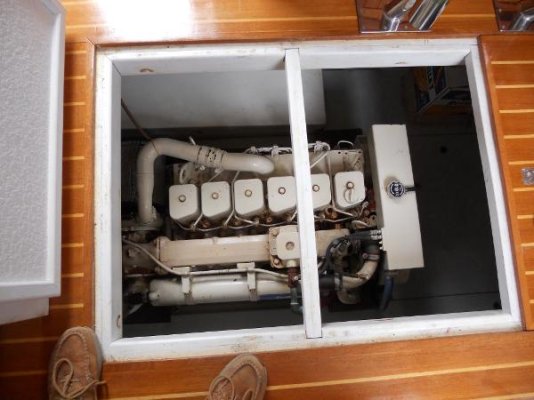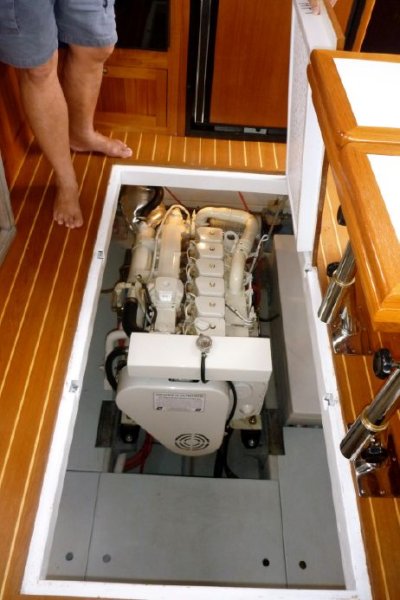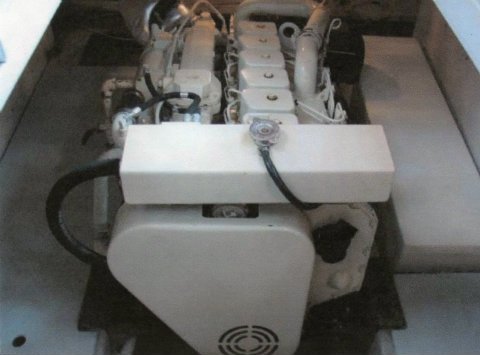You are using an out of date browser. It may not display this or other websites correctly.
You should upgrade or use an alternative browser.
You should upgrade or use an alternative browser.
Can you help me scouting 3208s?
- Thread starter Hawgwash
- Start date
The friendliest place on the web for anyone who enjoys boating.
If you have answers, please help by responding to the unanswered posts.
If you have answers, please help by responding to the unanswered posts.
Thanks Ted but that's not where I'm going with this. Unless that is your way of saying 3208s with 4500 hours are finished???Try Steveston Marine, I was quoted approx. $14000 for rebuilt ones a couple of years ago. Said they had lots of parts.
I would like to know what to look for when I go in the ER. Tell tales. Particular joints, hoses, castings, gaskets, housings on these things. Then sounds too when started cold and run. Things I can poke at, wiggle, feel, sniff, taste.
This isn't any kind of mechanical survey, just a look and ask questions thing.
The ad makes it sound like a reasonability clean boat but I know nothing about Cats. Yet.
Last edited:
Biloxi Jim
Veteran Member
- Joined
- Feb 20, 2014
- Messages
- 36
- Location
- USA
- Vessel Name
- La Dolce Vita
- Vessel Make
- 1991 48 Californian
My 3208s are 1991 models. But there are a few things that I have learned in general about 3208s as I boiled the cooling system and worked on the fuel injection pump.
If they don't start on the second revolution there is a problem. Replace the fuel filters and all that is left is compression.
Fuel leaking into the valley is most likely a governor seal ($200). Out of the weep tubes is a complete injection pump rebuild ($1200). The governor is the aft end of the injection pump.
Most injection pump failures on marine engines, I am told by an old school Marine Diesel Mechanic, is related to water in the fuel. Second is lack of use, low hours.
If you had the 375 hp, 425 hp, or more engines 4500 is a lot of hours. A mechanic that works on Rig Generators says 10,000 hrs is rebuild time for the low hp engines that run continuous.
You want to start the engine cold. Being in the great white north, the block needs to be warm with block heaters. This way you have a true sense of how hard it is to start.
NO ether!!! If you see ether anywhere around and especially if they say it is needed to start, RUN.
Last but not least, Black smoke is over fueled/ cold. Blue smoke is burning oil. White smoke could be compression, water (steam), or fuel starvation/ under fueled.
Any question run a compression test.
If they don't start on the second revolution there is a problem. Replace the fuel filters and all that is left is compression.
Fuel leaking into the valley is most likely a governor seal ($200). Out of the weep tubes is a complete injection pump rebuild ($1200). The governor is the aft end of the injection pump.
Most injection pump failures on marine engines, I am told by an old school Marine Diesel Mechanic, is related to water in the fuel. Second is lack of use, low hours.
If you had the 375 hp, 425 hp, or more engines 4500 is a lot of hours. A mechanic that works on Rig Generators says 10,000 hrs is rebuild time for the low hp engines that run continuous.
You want to start the engine cold. Being in the great white north, the block needs to be warm with block heaters. This way you have a true sense of how hard it is to start.
NO ether!!! If you see ether anywhere around and especially if they say it is needed to start, RUN.
Last but not least, Black smoke is over fueled/ cold. Blue smoke is burning oil. White smoke could be compression, water (steam), or fuel starvation/ under fueled.
Any question run a compression test.
Last edited:
Old deckhand
Guru
Have put almost twice that number of hours on NA 3208 and they were running strong when I sold the boat.
Biloxi Jim
Veteran Member
- Joined
- Feb 20, 2014
- Messages
- 36
- Location
- USA
- Vessel Name
- La Dolce Vita
- Vessel Make
- 1991 48 Californian
It is all in how they are maintained.
Thanks for the check list Jim. Gives me a place to start and some questions to ask.My 3208s are 1991 models. But there are a few things that I have learned in general about 3208s as I boiled the cooling system and worked on the fuel injection pump...It is all in how they are maintained.
I get the "maintained" part just need to know what to look for and ask about, besides the obvious.
Last edited:
Thanks OD. Same owner for 10 years so that's encouraging. To a degree.Have put almost twice that number of hours on NA 3208 and they were running strong when I sold the boat.
Last edited:
kulas44
Guru
The 210 hp 3208 will run one day longer than forever. In medium duty trucks back in the day (previous life as a lineman) really cold starts required ether. Cat reccomended it. Never caused any problems that I can recall. They started fine in anything but really cold temps. But, for 210 hp they are a 600 plus cubic inch engine, Cummins 6BT trumps them everytime.
From everything I have been learning, I should be watching for reman 6Bs but...with me arse planted on a milk crate in an engine room, staring at a 3208NA, what should I not see? What would concern you before it is even turned over?The 210 hp 3208 will run one day longer than forever. Cummins 6BT trumps them every time.
Capt. Jon
Guru
Like Jim said in his first list. That's a good list. Looking in the valley will tell you a lot. Any fuel or wet of any kind is an indication of issues. They should start with basically a bumping of the starter. There should be no grinding. On a cold start there will be a little smoke but it should dissipate after a minute or so.
Rust is the enemy of a 3208. If you see heavy rust in the valley or under the exhaust manifolds next to the heads it a sure sign of trouble. If you can look in the coolant tank with a light see if there is any rust on the plate just below the coolant tank filler neck. Rust there might mean the coolant was not properly keep up. I would also run my hand down the coolant tube from the oil cooler that runs to the back of the engine looking for heavy rust and coolant.
Look around the gasket joints at the ends of the exhaust manifolds and risers. If there is white bloom around the crevasses this could be an indication that the coolant passages in them are plugged up.
Any oil staining or streaking down the front of the oil pan will tell you if the oil seals are starting to fail. If it's leaking in the front of the engine you can pretty much bet it's an indicator that the rear seal is leaking or not far behind.
3208's are great engines. Very reliable. They do require a fair amount of maintaining. The cooling system and the exterior of the engine (the latter due to all of the steel tubes and oil pan) IMHO are a good indication of how the engines have been treated during their life.
Good luck. Let us know how you make out. Be sure to take a flashlight!
Rust is the enemy of a 3208. If you see heavy rust in the valley or under the exhaust manifolds next to the heads it a sure sign of trouble. If you can look in the coolant tank with a light see if there is any rust on the plate just below the coolant tank filler neck. Rust there might mean the coolant was not properly keep up. I would also run my hand down the coolant tube from the oil cooler that runs to the back of the engine looking for heavy rust and coolant.
Look around the gasket joints at the ends of the exhaust manifolds and risers. If there is white bloom around the crevasses this could be an indication that the coolant passages in them are plugged up.
Any oil staining or streaking down the front of the oil pan will tell you if the oil seals are starting to fail. If it's leaking in the front of the engine you can pretty much bet it's an indicator that the rear seal is leaking or not far behind.
3208's are great engines. Very reliable. They do require a fair amount of maintaining. The cooling system and the exterior of the engine (the latter due to all of the steel tubes and oil pan) IMHO are a good indication of how the engines have been treated during their life.
Good luck. Let us know how you make out. Be sure to take a flashlight!
Last edited:
Nice, thank you Jon.Like Jim said in his first list. That's a good list. Looking in the valley will tell you a lot. Any fuel or wet of any kind is an indication of issues. They should start with basically a bumping of the starter. There should be no grinding. On a cold start there will be a little smoke but it should dissipate after a minute or so.
Rust is the enemy of a 3208. If you see heavy rust in the valley or under the exhaust manifolds next to the heads it a sure sign of trouble. If you can look in the coolant tank with a light see if there is any rust on the plate just below the coolant tank neck. Rust there might mean the coolant was not properly keep up. I would also run my hand down the coolant tube from the oil cooler that runs to the back of the engine looking for heavy rust and coolant.
Last edited:
djones44
Senior Member
That engine is rated at 30,000 gallons before overhaul, I believe. So if it's 210 NA you can expect it to have twice the life of the 375 hp version, and no turbo to rebuild if you do encounter some surface issues. A safe buy if everything else checks out, IMHO.
A later look at boatdiesel.com may elaborate on kinks you might find or are declared during your inspection. Lots of parts and knowledgeable mechanics available.
A later look at boatdiesel.com may elaborate on kinks you might find or are declared during your inspection. Lots of parts and knowledgeable mechanics available.
Good information and encouraging as well. What you and others have given me along with reading the Cat Manuals, I think I'm fairly well armed for this cursory look.djones said:That engine is rated at 30,000 gallons before overhaul, I believe. So if it's 210 NA you can expect it to have twice the life of the 375 hp version, and no turbo to rebuild if you do encounter some surface issues. A safe buy if everything else checks out, IMHO.
As I've mentioned before, I've been a gasser all my boating life and I'm looking forward to a diesel course this spring.
Thanks again to all who chimed in here.
Thanks again guys. It was not an easy task to look at these things. Very tight space and no access to the outsides because seller had a mountain of plastic bins back there.Capt. Jon said:Good luck. Let us know how you make out.
Starboard had a fair bit of diesel in the valley. None on the port but I could hardly get my eyes in there to see much. The only way to have had a good look would be to lift the hatches in the salon which meant moving furniture, unscrewing carpet edge and rolling the carpet back. I couldn't get close enough to the coolant tanks to see inside. Starboard had narrow rust streaks down from the exhaust manifold bolts and a trace of oil on the front of the pan.
The good news is, both started with a bump of the key and blue smoke disappeared in about 3 minutes.
There were too many other things I didn't like about the boat to think about going any further, but those were just personal preference items. Although steel fuel tanks that were impossible to see more than one end and a bit of the top, concerned me.
Now, from what I have read, those things should hit 2800 RPM at WOT and he said 2400 was tops. Cruised 7.5 at 1500. He had changed from the original 3 blade props to 4 but couldn't really explain why.
Other than a few oddities, I think someone will get a decent boat here, just not me.
Last edited:
Old deckhand
Guru
I believe the continues rating is 2400 rpm. You will need to know what the engines are rated. Yes, the pleasure rated engines are 2800 rpm.
Capt. Jon
Guru
I forgot to tell you along with the flashlight to bring a mirror. A cell phone camera works sometimes in those had to get to places also. Looking at a lot of boats will give you great experience!
Yes, thanks John. I was there primarily to get a feel of the 3208 configuration in a confined space. Man, I tell ya, I can now appreciate what it would have been like if they were TAs. Based on my lack of agility and size, I think a single would make more sense.I forgot to tell you along with the flashlight to bring a mirror. A cell phone camera works sometimes in those had to get to places also. Looking at a lot of boats will give you great experience!
The head room was just inches above the air filter.
The owner was a good guy and would have spent the day with me crawling around, if the women weren't crying about being hungry. Sheeesh.
Looks like maybe this would work for me...
Attachments
Last edited:
FF
Guru
- Joined
- Oct 12, 2007
- Messages
- 22,552
Just look at how the boat is operated.
If its mostly a displacement cruiser 4500 is no big deal.
If it is pushed up on top all the time and run at high speed 4500 is a LOT of hours.
If its mostly a displacement cruiser 4500 is no big deal.
If it is pushed up on top all the time and run at high speed 4500 is a LOT of hours.
The Monk 36, which just recently caught my attention comes as a single. Early builds in Taiwan; Lehman and Perkins. '92 through '08 builds in Nova Scotia came with Cummins 6Bs, some "T"s by order. Here are a couple more pics from current listings.Now that is sweet engine.
Attachments
Similar threads
- Replies
- 68
- Views
- 5K
- Replies
- 47
- Views
- 4K




